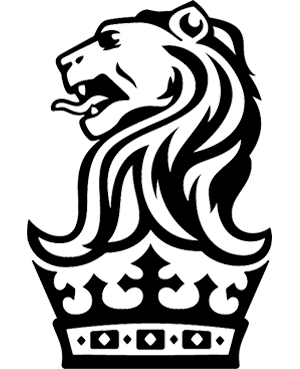Tags
#Analytics
Measure user experience with HEART
Without being able to effectively measure the success of your products or services, it will be impossible to know if your choices were right, wrong, or somewhere in the middle. To solve for this, Google measures the quality of the user experience using the HEART method:
- Happiness: How satisfied are users with your product?
- Engagement: How how long do users engage with your product?
- Adoption: How many users subscribe, enroll, or sign up for your product?
- Retention: How many users consistently come back to your product?
- Task success: Can users accomplish their goals quickly and easily?
How to use the HEART method:
- Step 1: Set goals. When setting goals, Googlers will ask themselves: "What do we want a customer to say after using our product?”
- Step 2: Define signals. Map your goals to related user actions, behaviors, or attitudes.
- Step 3: Choose metrics. Based on your signals, create measurable and trackable metrics.
See an example of the HEART method in action.
Build your strategy by following the 3 Cs
- Collect data on everything: Over 40,000 Ritz-Carlton employees are responsible for collecting qualitative and quantitative data points on everything from the number of scuffs on elevator doors to how long it takes guests to become impatient at check-in. Data, that is not provided directly from staff, comes from guest comment cards, phone interviews, online questionnaires, and secret shoppers.
- Compile and analyze the information: All of the data is then reviewed through the lens of the company's five key success factors: Brand strength (the Mystique), employee engagement, customer engagement, product service excellence, and financial performance. Trends are then discovered and a SWOT analysis is performed in order to compare where they are today to their desired future state. The result is three to four priority measurements for each key success factor.
- Communicate your findings to everyone: The success factors and their measurements are then designed into a pyramid infographic with brand at the top and financial strength at the bottom. The pyramid is then prominently displayed in all staff areas. Department-level meetings are continuously held to discuss how each employee can personally impact the Key Success Factors and in turn impact the overall success of The Ritz-Carlton.
Measure engagement, not satisfaction
High satisfaction scores only tell you if customers are happy, not if they are loyal to your brand. So, The Ritz-Carlton began measuring customer engagement with Gallup's CE11 survey and employee engagement with Gallup's Q12 survey. By measuring both employee and customer engagement holistically, which Gallup refers to as HumanSigma, The Ritz-Carlton started to see the direct effect that employee engagement had on the customer experience.
Obsessively collect guest data to create personalized experiences
The Ritz-Carton staff are provided Guest Preference Pads, so they can write down notes about guests and later upload them to their customer relationship management (CRM) database. Any problem encountered or preference expressed, gets written down. Staff even do a quick Google search of guests to add their pictures to the database.
All of this information is then shared with staff during the morning lineup to help prepare for the day. The staff also are fed information through ear piece radios to help welcome guests by name and to make their stay more personal.
Measure the quality of your service
To prove to themselves that they are continually improving in service, Umpqua Bank began measuring customer and staff service quality. The scores are calculated each month, teams are ranked, and the results are posted for everyone.
The goal is to reward team performance, not individual accomplishment. The winning store and department both receive a crystal trophy that they proudly display until it moves on to the next winner the following month. Any store or department that ranks poorly for some time is asked to develop an improvement plan and then is held accountable for implementing it.
Store Return on Quality (ROQ) Measurements
- Sales Effective Ratio (SER) measures the average number of bank products and services sold to new customers at each sales session.
- Customer Account Retention measures the number of deposits closed as a percentage of all accounts.
- Customer Service Surveys measure the quality of service that customers receive.
- New Account Surveys measure the average score of new account holders.
- Telephone Shopping Reports are done three times per month by outside vendors. They measure whether the phones are answered correctly and if the associate asks if the customer needs additional information.
- New Deposit & Loan Accounts / Full-time Equivalent measures the total number of deposits and loans divided by the number of employees working in the store.
Department Return on Quality Measurements
Departments at Umpqua each have developed service-level agreements (SLA) with one another. These agreements include standards such as turnaround time. Every associate who interacts with a specific department provides both positive and negative feedback to that department with an SLA survey.
Answer the phone within 20 seconds
Zappos sets a goal of answering 80% of incoming calls within 20 seconds. And although they are quick to answer, the rest of the call is set to the customer's pace with some calls lasting hours.
To keep up a quick response time, all employees are expected to take customer calls during peak times of the year, including the CEO. Luckily for Zapponians, they all have already been trained on how to do this during their onboarding process.
Measure employee happiness in 5 seconds
It might not literally take 5 seconds, but the Zappos Five Second Happiness Survey comes close. Every month Zappos employees are surveyed to measure their happiness levels. Zapponians answer these five questions with a response of either 'definitely,' 'sometimes,' or 'not at all,' along with an option to leave comments:
- I believe that the company genuinely has a higher purpose beyond just profits.
- My role in the Zappos Family has real purpose—it is more than just a job.
- I feel that I am in control of my career path and that I am progressing in my personal and professional development within the Zappos family.
- I consider my co-workers to be like my family and friends.
- I am very happy in my job.
The survey is anonymous but anyone who chooses to sign their name is personally responded to by the Zappos leadership team. With an average response rate of 60 to 85%, results are calculated within a week. All scores and comments (good and bad) are shared with the entire company. Included in the report, Zapponians are updated on any changes that came about as a result of past surveys.




